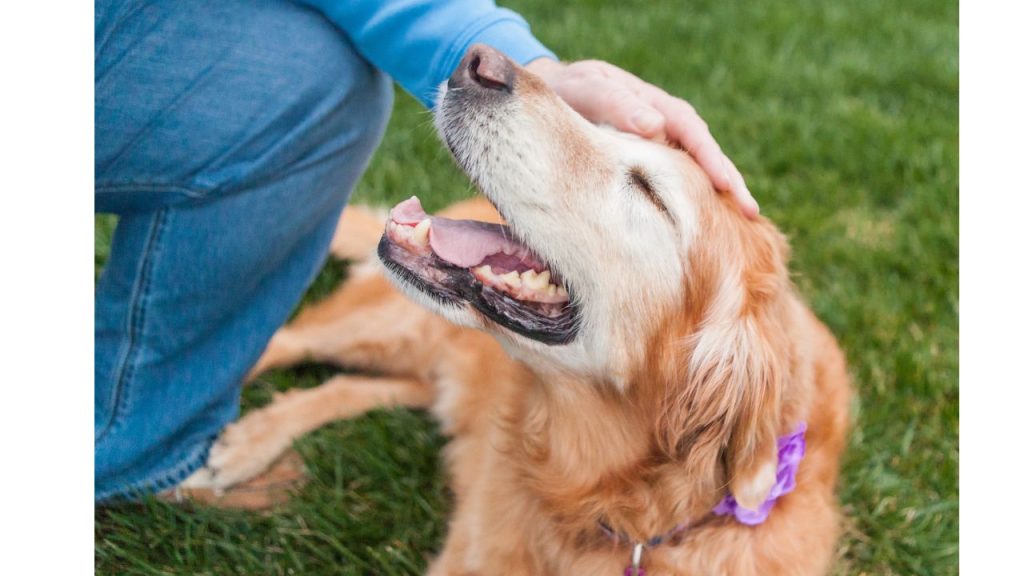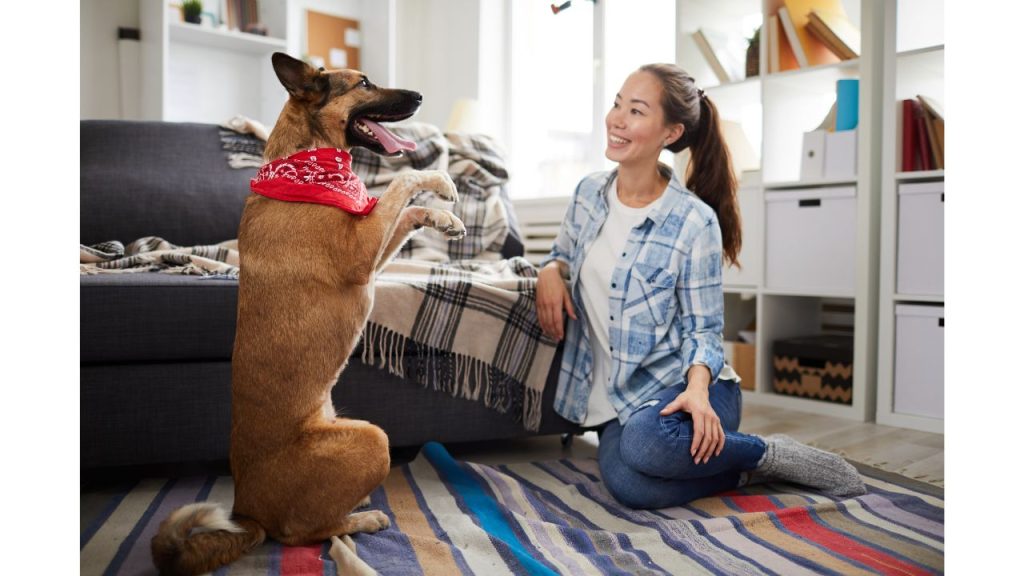Rescue dog separation anxiety
Are you concerned about your rescue dog’s separation anxiety? Rescue dogs often come with their own set of challenges, but the good news is that there are some simple steps you can take to help your pup feel more comfortable when left alone.
With a little patience and consistency, you can create a safe and secure environment for your furry friend. In this article, we’ll walk you through how to fix your rescue dog’s separation anxiety so they can learn to stay calm and enjoy spending time apart from you.
Establish a Routine
Establishing a routine can help you and your pup feel more relaxed and connected. Giving structure to your rescue dog’s day-to-day activities is an effective way to combat separation anxiety.
Having a predictable daily schedule that involves regular meals, bathroom breaks, walks, and playtime will give your dog a sense of security. Additionally, playing calming music in the house when you leave can comfort them while you are away. This will reduce their stress and make them feel less alone.
It’s important to make sure that these activities are fun and engaging for your pup so they look forward to them each day. Take time to get creative with interactive toys or games like tug-of-war or hide-and seek which are both ideal for teaching impulse control and building stronger bonds with your pet. Plus, it’s also great exercise which we all know helps keep us calm!
In addition to the above measures, rewarding good behavior is essential as well. Every time they stay calm or show positive behaviors when you leave the house or come home again, be sure to reward them with treats or lots of praise so they learn what kind of behavior is expected from them in those situations. This reinforcement will help build trust between you two over time which will ultimately alleviate some of the separation anxiety your rescue pup may have been experiencing before adoption.
Provide Comfort Items
Providing comfort items can help soothe a pup’s feelings of distress and create a sense of security. Comfort items could include their favorite toys, blankets, and beds that they can snuggle up in when feeling anxious or overwhelmed. A pup may also benefit from having something to chew on such as a safe chew toy or treat-dispensing toy that helps keep them occupied.
When providing these items for your rescue dog, be sure to reward progress by offering praise and treats when they use the item correctly. Doing this will help build positive associations with the toy or item and create an overall sense of safety for your pup.
It is important to note that while comfort items are helpful in managing anxiety, it is also essential to provide structure and mental stimulation in order for your pup to feel secure. This can include daily walks, teaching basic commands like “sit” and “stay”, and engaging in playtime activities such as tug-of-war or fetch.

Not only will these activities help tire out your pup physically but mentally as well which can help reduce any stress or anxieties they may feel towards being separated from you.
Creating a calm environment at home with plenty of exercise outside the house should also be part of the routine you establish for your rescue dog. With the right amount of love & patience along with providing comfort items such as toys & blankets, you can successfully manage separation anxiety in your pup!
Read more for Best Dog Calming Aid | Top-rated Solutions for Calming Anxious Dogs
Exercise Your Dog
Take the time to give your pup some physical and mental stimulation, and help them stay calm and content. Regular walks, playtime with you or other dogs, and positive reinforcement are all great ways to ensure your pup is getting enough exercise.
Taking regular walks can help tire out both their body and mind. Making playtime fun with toys or by playing fetch can keep their mind engaged. Positive reinforcement in the form of treats when they do something good will make them excited for more activity.
Exercising your rescue dog helps them release any pent up energy that may be contributing to their anxiety. It also gives them an opportunity to socialize with you as well as other animals which can go a long way towards helping them feel secure in their new home.
With consistent exercise, you’ll have a happier pup who’s more likely to relax when left alone.
Make Time for Training
Helping your pup learn new skills and behaviors can help build trust between you two, while also providing them with a sense of purpose. This is especially important for rescue dogs who may have had traumatic past experiences that need to be overcome.
It’s important that you socialize regularly and avoid isolating your dog from other people or animals. A great way to do this is by making time for training each day, even if it’s just for 10-15 minutes.
Training should not only focus on commands like “sit” or “stay” but should also include activities such as playing games like fetch or hide and seek. Activities like these will help give them a sense of accomplishment when they complete the task correctly, which in turn helps boost their confidence and self-esteem.
Additionally, you can use treats or positive reinforcement to reward good behavior during training sessions, which further reinforces the idea that good behavior leads to rewards and ultimately strengthens the bond between you two.

Going out into public spaces with your pup can be extremely beneficial as well because it allows them to interact with different people and dogs in a safe environment which builds their socialization skills in addition to helping them work through any lingering anxieties or fears they might still have about being around others.
Plus, spending more quality time together will strengthen the connection between you while promoting healthy habits both mentally and physically!
Consider Natural Remedies
By considering natural remedies, you can symbolically unlock the door to a brighter future for your beloved pooch and ease their worries.
Music has been found to be an effective remedy for calming anxiety in dogs. You can create a soothing soundtrack with calming music specifically tailored to the needs of your pup.
Additionally, herbal remedies like chamomile, lavender oil, or valerian root have proven helpful in relieving stress in rescue dogs. These natural treatments are much less invasive than medications and should be considered as an option when looking into ways of helping your dog manage their separation anxiety.
When introducing any new course of treatment for your pup, it’s important to do so gradually and monitor how they react. If you choose to use herbal remedies, start by adding small amounts into their food over time until you reach the desired dose.
With each step of progress, reward your dog with treats and lots of praise! This positive reinforcement will help them associate these treatments with something positive rather than just another form of restraint meant only to calm them down.
The key is patience – give yourself time to experiment with different methods until you find one that works best for both you and your four-legged friend!
By developing a plan tailored specifically for your pet’s unique situation and personality, you can take meaningful strides towards improving their mental health through natural means.
It won’t happen overnight but if done correctly, it will make all the difference in improving their quality of life!
Frequently Asked Questions
What are the first signs of separation anxiety in a rescue dog?
If you’ve recently adopted a rescue dog, one of the first signs to look out for is separation anxiety. Your pup may start to act differently when you’re away from them, such as barking excessively or destroying furniture.
To help your canine companion overcome their anxieties, start with socialization training and positive reinforcement. Make sure all interactions with your pup are positive experiences so they can learn new behaviors.
This will not only improve their overall wellbeing but also increase the bond between you and your pet.
How can I tell if my rescue dog has separation anxiety?
If you’ve recently adopted a rescue dog, it’s important to be aware of the signs of separation anxiety.
Some common symptoms that your pup may display include excessive barking or whining when left alone, destructive behaviors like chewing on furniture, sleep disturbances, and/or being overly clingy.
To help prevent and manage these issues, make sure you give your puppy plenty of socialization opportunities and use crate training to create a safe space for them when they’re feeling overwhelmed.
With patience and consistency from you as their owner, your rescue dog can learn to cope with their separation anxiety.
Are there any medications I can give my rescue dog to help with separation anxiety?
Are you worried about your rescue dog’s separation anxiety? You’re not alone – it can be a huge challenge! However, there are medications out there that could help.
Positive reinforcement and socialization activities have been known to work wonders, but if you want to go the extra mile, look into prescription medications. You’ll be amazed at what a difference they can make in calming your pup’s anxieties – it’s like giving them superpowers!
With the right combination of care and medication, you can give your rescue dog the life they deserve.
Is there anything I can do to help my rescue dog when I’m away?
When you’re away, there are things you can do to help your rescue dog manage their separation anxiety.
Socializing them with other dogs and people can help them build confidence, while activities like puzzle toys and food-stuffed chew toys provide environmental enrichment.
When leaving the house, try to keep the atmosphere calm and reassuring; give your pup a toy or treat before departing so that they have something positive to focus on during your absence.
Lastly, consider investing in an automatic pet feeder which will provide them with regular meals throughout the day.
How long will it take to successfully treat my rescue dog’s separation anxiety?
It’s a familiar feeling for anyone who’s rescued a dog: the worry of leaving them home alone. After all, separation anxiety can be an issue for many rescue dogs.
But with the right positive reinforcement and environmental changes, you can help your pup conquer their anxieties and improve their quality of life.
Imagine it like this: you’re teaching your rescue dog to swim in a large pool, helping them grow more comfortable with each stroke. With consistency and patience, they’ll eventually cross the entire pool on their own.
That’s how long it may take for successful treatment of your pup’s separation anxiety.
Conclusion
You can fix your rescue dog’s separation anxiety with a few simple steps.
Establishing a routine, providing comfort items, exercising them, and making time for training will all help to ease your pup’s feelings of abandonment.
Additionally, natural remedies like CBD oil and herbs have been shown to be effective in calming anxious dogs.
With love and consistency, you can help your rescue pup create a new life free from fear and anxiety.
